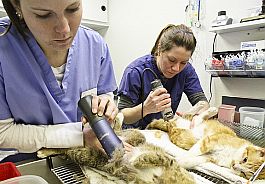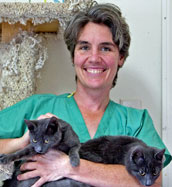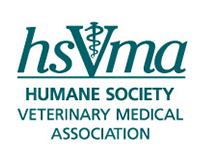The Case for Low-cost, High-quality, High-volume Spay and NeuterBy Sara White, DVM August 11, 2011 Low-cost, high-quality, high-volume, spay and neuter (HQHVSN) programs have a vital place in our profession and are essential to decreasing cat and dog overpopulation and shelter euthanasia. While more data needs to be collected, preliminary research shows a reduction in shelter intake and euthanasia associated with HQHVSN programs. And by providing care to underserved patient populations, spay and neuter work enhances the quality of life for animals and the humans who live with them. Do spay and neuter programs work?We have already seen the positive effects of spay and neuter programs on shelter intake and euthanasia. Shelter euthanasia in Asheville, NC, has decreased by 79 percent since Humane Alliance established their low-cost high-volume spay and neuter clinic.1 In Jacksonville, Florida, a targeted low-income spay and neuter program led to a 37 percent decrease in shelter euthanasia in three years. Shelter intake numbers turned around as well, from an annual increase in intake of 15-20 percent per year prior to the program, to a decrease of 8.3 percent between the program’s first and second full years.2 During the first 12 years of New Hampshire’s Animal Population Control Program, there was a significant decrease both in cat intake and cat euthanasia in shelters.3 And Austin-based EmanciPET Free Spay/Neuter Program produced a significantly lower rate of increase for dog and cat intake and euthanasia in the municipal shelter for animals from the program areas.4  Veterinary students prep cats for surgery at a 2011 Spay Day event in Oregon. Katie Campbell But it is easy to wonder—with so many spay and neuter clinics opening, why have we not seen more profound population changes? One mathematical model calculated that the full impact of a one-time permanent increase in the neutering rate on shelter euthanasia may not be felt for as much as 40 years.5 Since many of the spay/neuter clinics now in existence have opened within the past five years,6 we may only now be seeing the effects of a movement that began several decades ago. Why is “low cost” necessary?Cost is the reason most often cited by owners for not having their cats neutered.7,8 In the United States, 14.3 percent of people live in poverty.9 People with low incomes are nearly as likely to own pets as are people with high incomes,10 indicating that many animals live in households that simply cannot afford full-service veterinary care. Low-cost or free spay and neuter is the only way to reach these segments of the companion animal population. Does low cost spay/neuter work for feral cat (and dog) population control?Population modeling shows that feral cat population control can be achieved by ongoing spaying of at least 75 percent of the fertile females.11 While this approach takes ongoing effort and monitoring, the number of surgeries required to maintain a greater-than-75 percent spay rate is low after the initial, first-year trapping and neutering. Indeed, removal-and-euthanasia strategies, sometimes touted as an alternative to Trap Neuter Return (TNR) programs, also require ongoing monitoring and euthanasia, making them no less effort than TNR. In addition, euthanasia of ferals is often unsupported by the general public and by colony caretakers, and may be morally untenable for the animal control officers, humane society staff and veterinarians who would be asked to perform the euthanasia. And TNR programs have proven successful: A TNR program in Jaipur, India sterilized and rabies vaccinated 24,986 dogs between 1994 and 2002. With 65 percent of the female dogs sterilized and vaccinated, the dog population declined by 28 percent.12 A cat colony on a university campus in Florida saw a 66 percent decrease in population after the onset of a TNR program, indicating that a long-term program of neutering followed by adoption or return to the colony can result in a sustained reduction of free-roaming cat populations in urban areas.13 The percent of feral cat caretakers attempting to have feral cats neutered14 or taking feral cats to a veterinarian for any reason15 is small, ranging from 11 percent to 22 percent. Cost is likely a major factor limiting care for these cats, necessitating the use of low-cost programs to control their populations. Why should veterinarians be the ones to solve this problem?Taking action to solve a problem does not equate to taking the blame for that problem. Veterinarians are in a unique position to act because we have skills that can actually change the population dynamics of cat and dog populations. Human medicine offers examples of professionals providing care at low or no cost to individuals who cannot otherwise access care. Rather than cheapening the medical profession, these services demonstrate compassion while enhancing human welfare and public health. Similarly, providing veterinary services to those who could not or would not otherwise afford them demonstrates compassion, enhances the value of the veterinary profession, and protects public health and animal welfare.
Are standards of care, or standards of living, lower for those in spay/ neuter practice?The Association of Shelter Veterinarians’ Veterinary Medical Care Guidelines for Spay-Neuter Programs16 provides practical standards for high-quality, humane, and efficient care of veterinary patients in high-volume spay and neuter programs. These guidelines promote consistent, quality medical and surgical care for all patients in a variety of spay/neuter settings. And spay/neuter practice can be interesting and challenging. Spay/neuter vets learn efficient surgery techniques to minimize tissue trauma, and stay current on anesthesia and analgesia protocols to maximize patient comfort while staying within budget. High-volume practice means that we get to see (and treat) the uncommon: male calicos, uterus unicornus, and bilateral cryptorchids. Efficient HQHVSN programs need not underpay their veterinary staff: these clinics can and should offer competitive salaries and benefits.17 And the opening of a spay/neuter clinic or program need not lead to a decrease in procedures performed by private practitioners as some might fear. In a study of five communities with targeted spay/neuter programs, the total number of spays and neuters in the communities increased, including the number performed in private practices.18 For anyone interested in learning more about high quality, high volume spay/neuter or in connecting with other veterinarians who work in this field, consider joining the Association of Shelter Veterinarians so that you can participate in their active email listserv group. Mentorship for those interested in opening HQHVSN clinics and training opportunities can be found at the Humane Alliance and at the ASPCA’s National Spay Neuter Project.  Sara White, DVM Lisa Robinson The original version of this column appeared as a blog entry in response to a Veterinary Economics article and can be viewed on the DVM360 website. Dr. Sara White started Spay ASAP, a nonprofit mobile spay/neuter clinic in 2006. Since that time, she has spayed and neutered more than 20,000 cats and dogs in Vermont and New Hampshire. Dr. White is a board member with the Association of Shelter Veterinarians, promotes pediatric spay/neuter, and trains other veterinarians in this surgical protocol to help address both feral and tame cat overpopulation. She was one of the winners of the HSVMA’s Best Friend to Feral Cats awards in 2010 for her ongoing efforts to help feral cats in her region.
|
